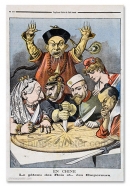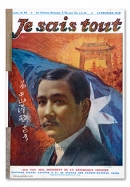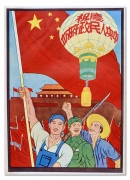
Qing Dynasty
Qing Dynasty
(1644-1912) was the second dynasty in China’s history that was ruled by minority ethnic group and the last imperial dynasty of China. Qing had ruled China for 267 years with 12 emperors. The dynasty was founded by Jurchen Nurhaci in Manchuria in 1616. Hong Taiji declared the title of the dynasty as Qing in 1636. They conquered Ming and entered Beijing in 1644.
During the flourishing age of emperors Kangxi, Yongzheng and Qianlong, economy and culture were recovered and developed. The territory of the country was expanded and many small states became vassal states of Qing. That was the peak of Qing Dynasty. In the middle to late Qing Dynasty, close door and restraining commerce policies were adopted due to political rigidity. Cultural autocracy and standstill mindset led Qing to fall behind the world.
The broke out of Sino-British Opium War, following with wars and invasions by European powers and Taiping Rebellion; internal problems, foreign aggression wars, failures of political reform and corruptions resulted fiscal crisis to the national and hardship to people’s livelihood. The ruling of Qing Dynasty was near disruption.
Xinhai Revolution leading by Sun Yat-sen successfully overthrew the ruling of Qing in 1911. Puyi, the last emperor abdicated on February 12, 1912.
◎ We sort out, photographed and listed around 400 pcs of news illustrations and printed materials that were published in Qing Dynasty by Chinese and Western people.

Republic of China
Republic of China (1912 – now)
Established in Nanjing on 1st of January 1912. Sun Tay-sen was the first president. He abdicated to Yuan Shikai in later the same year. After Yuan’s death, battles between the warlords of north China continuous. Jiaang Jiehshih led the Northern Expedition to overthrew the central government in Beijing and established a new nationalist government in Nanjing. The first civil war between KMT and CPC broke out in 1927. 1931, Japanese started to invade China after Mukden Incident. Xi’an Incident in 1936 was the turning point and cause to the Second Cooperation between Communist Party of China and Kuomintang. Second Sino-Japanese War broke out in 1937, Japan made a total invasion to China. That’s the beginning of eight years Anti-Japan War. Japan eventually surrendered in August, 1945. Soon after that, a full-scale civil war between CPC and KMT resumed in 1946. This war ended as People's Liberation Army won and CPC toke over mainland China. KMT lost control of mainland China and retreated to Taiwan. This formed the separated ruling governments known as People’s Republic of China in mainland China and Republic of China in Taiwan.
◎ We sort out, photographed and listed around 400 pcs of news illustrations and printed materials that were published in Republic of China before 1949 by Chinese
and Western people.

People's Republic of China
People's Republic of China (1949-now)
Communist Party of China was found in July 1921 in China. The First Cooperation between CPC and KMT was ended because Jiaang Jiehshih ordered to expelled and killed Communist members in 1927. The troops of Nanchang Uprising and Autumn Harvest Uprising led by Mao Zedong formed the Red Army in 1928. China Soviet Republic was found in 1931. The capital was Ruijin, Jiangxi. They issued their own constitution and currency. The Red army retreated from Jiangxi and started a Long March in 1934. The long March ended in 1936. Xi’an Incident happened in 1936, Jiaang Jiehshih was forced to stop assaulting the Communist army and formed an United Front to resist Japanese invasion. That was also called the Second Cooperation between the two parties. Second Sino-Japanese War broke out in 1937, Japan made a total invasion to China. China went through an eight years Anti-Japan War. After the surrender of Japan in August, 1945, negotiations between the two parties broke down and a total civil war started. The result of the civil war was Communist Party won. A founding ceremony was held on Tiananmen Square on 1st of October, 1949. Mao Zedong declared the establishment of People's Republic of China. In the early years of PRC, land reform, agricultural and industrial revolution, socialist public ownership were implemented; socialist economic system was basically set, educations were popularized and culture levels were rose. 1958 – 1960 was the period of Great Leap movement. High target was the main symbol of this movement, resulting in three years of economic difficult period. Cultural Revolution started in 1966 and went through 10 years. “Reform and opening up” policy was started from 1978. Economic and political reforms, modernized constructions, gradually set up a Socialism modernization construction way with Chinese characteristics. Under the “Reform and opening up” policy, economic grew rapidly, people’s living standards rose significantly, international status enhanced and active in diplomacy. The nation is in a flourishing age.
◎ We sort out, photographed and listed around 4000 pcs of chinese posters that were published in People’s Republic of China from 1949 to now.


